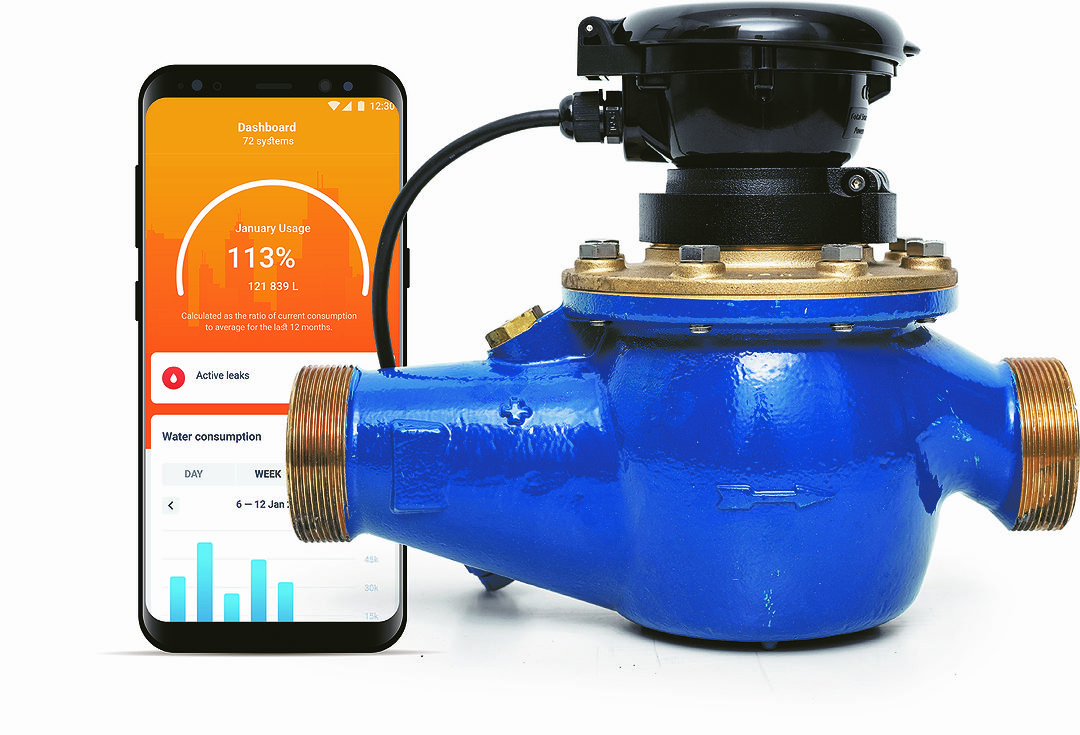Leak Detection Technology Solutions Stop Water Damage at the Source
Recognizing and preparing for risk will pay off for the environment, the success of construction projects and the integrity of building operations.

Water damage is a serious, chronic challenge. It’s a problem that many contractors assume they just have to live with.
But the increasingly competitive conditions in the industry and a strong worldwide push for corporate sustainability are driving companies to look for innovative new solutions that will prevent water damage, reduce waste and save time, money and trouble.
The problem starts with a simple lack of awareness about just how damaging water leaks can be, and how wasteful current facilities are.
Water leaks aren’t just an inconvenience, they’re a source of financial damage that costs businesses and insurance companies tens of billions of dollars a year in damage to facilities, project delays and lost productivity. And inefficiency is rampant in buildings and commercial facilities, where more than 25 percent of water consumed is wasted.
Moreover, water consumption is a significant source of carbon emissions — over 13 percent of US carbon emissions, a whopping 290 million metric tons per year are created by water pumping, treatment and transport.
Complex problem
The problem is complex, but can no longer be ignored.
Technological progress over the past few years provides effective water management for facilities and construction sites. Many of us are committed to making it easier for organizations to implement best conservation practices in our offices, hotels, factories, facilities, entertainment spaces, and other large commercial buildings.
Similarly, PHC professionals are constantly looking for new ways to enhance sustainability in the industry. It’s good for the planet and supports water security; it helps their customers save time and money; and it helps them establish themselves as important pioneers in the evolution of sustainable construction practices.
The ideal solution would mitigate damage from water leaks and reduce or even eliminate waste. It would detect leaks, alert staff, and automatically shut water off to prevent damage. It would need to function during all phases of the construction project and be adaptable, robust and modular so it could grow with the site as construction progresses. And it should transfer and support the facility’s operational lifecycle, either as a direct transition from construction or as a retrofit to existing facilities. And, of course, it should continue operating regardless of any communication or power infrastructure failures at the site.
Old-fashioned tech
Unfortunately, contractors and facility managers have been making do with outdated water-management tools for years.
There has been a lack of innovation in the space for decades. Old-fashioned technologies such as floor-based leak detectors are still common in many facilities. These sensors are basically just two wires in a container placed on the floor. If water touches the sensor, the system detects the short circuit and triggers an alert.
However, they provide very limited, after-the-fact alerts and cannot prevent damage. And they are only geared to detecting water spills and aren’t capable of helping reduce ongoing consumption.
Effectively protecting a facility requires a very large number of sensors. That is costly and time consuming. And you’ll need to guess where water would leak and flow, which is difficult to do.
Leak sensors are also prone to false alerts. A drop of water will set a sensor off just like a massive leak. These false alerts erode confidence in the system. Finally, leak sensors are merely reactive and don’t activate until after they have touched water. By the time an alert is sent, significant damage will have already occurred.
New generations
But a new generation of AI- and machine learning-based tools is emerging that helps reduce water-damage risks to a fraction of their current level. Innovations in IoT and AI are giving contractors, developers and facility owners the power to proactively mitigate water damage with huge efficiency.
These new systems can learn normal water usage patterns, alerting staff when an anomaly is detected. The systems can automatically shut off water supplies at the impacted location to prevent or minimize damage. The leading solutions can communicate over the cellular network and are powered by battery, so they can be deployed even before the internet and electrical infrastructure has been installed, and can continue to operate in case of outages or service interruptions.
A noted casino and resort recently incorporated a leak detection technology solution as part of its ongoing commitment to green initiatives, which also includes energy-efficient HVAC and lighting systems, as well as electric vehicle charging stations.
Before the system was installed, the resort used more than 6.5 million gallons a month. That amount was reduced by approximately 30 percent within a few months, returning the investment within a few months.
Another recent success story involves a global construction company that has deployed an AI-based solution at more than 40 of its projects.
Since the installation, the company has experienced six leak incidents, which would have likely caused significant water damage. In all cases, the system shut off the water supply and issued alerts. Incidents that could have led to thousands of dollars of damage and delays were addressed automatically, with no damage reported. The company now mandates the solution on all its construction projects as corporate policy.
While technology is a critical element in reducing waste and risk, leaders in our industry must start to take water damage and waste with due seriousness. A plan to mitigate water damage or loss should be put in place at the start of a project and buildings at risk should be retrofitted with protections.
Recognizing the risk and preparing for it will pay off for the environment, for the success of construction projects, and for the integrity of operational buildings.
Yaron Dycian is chief product and strategy officer for WINT, a company that produces artificial intelligence-powered leak detection and water conservation devices.




